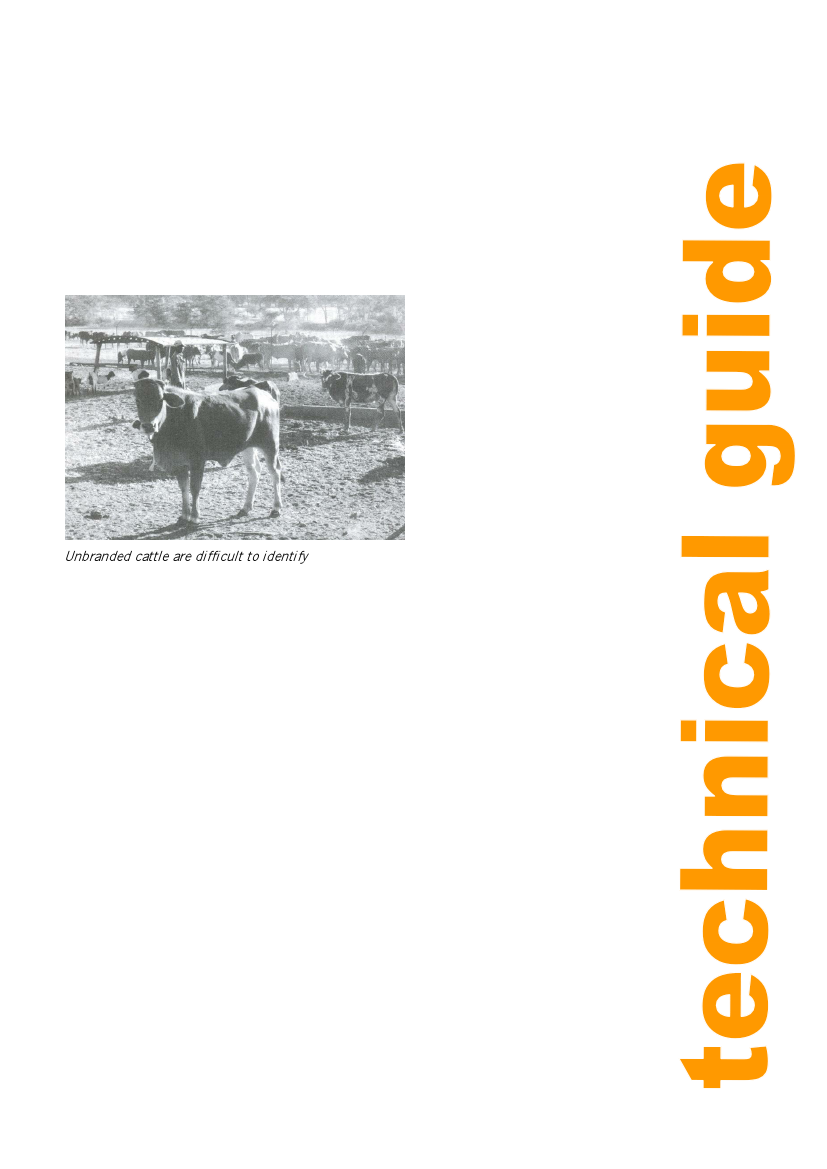
Beef cattle production and management
Practical Action
The branding iron should be heated using fire, gas or electricity to a glow and if not sure, test
the iron on a wooden plank. Once the animal is properly restrained, the iron is firmly placed in
the appropriate place. The length of time that the brand is held in the position will vary
according to its heat and the pressure applied. A good permanent brand is brown in colour.
Ear Notching
Ear notching has served long as an effective form of cattle animal identification. This involves
punching the ears using different shapes and different positions to represent different numbers
using an ear puncher. The problem with this method is that the numbers are limited and they
are difficult to read from a distance. In addition, the ears may get torn and that distorts the
numbers.
Unbranded cattle are difficult to identify
Ear Tags
These come in many different designs but they prove not to meet the twin requirements of
permanency and legibility at a distance. Ear tags can therefore not be used as a permanent form
of identification but are useful aids to management. The following types are in common use:
Self-locking metal tags
These are reliable and easily applied by the special applicator. Allow space in the tag for the
ear to grow if the animal is still young.
Plastic tags
Many types are available on the market. An appropriate tag should be used to suit the farm
circumstance.
Tattooing
Tattoos are made using a specially spiked applicator and ink to apply the tattoo to body parts
such as the ears and occasionally the lips of the animals. Although it provides a permanent
record, a tattoo is awkward to read and if not done skillfully, can be difficult to read. Tattoed
animals cannot be identified without first catching them.
Record keeping
Record keeping is of utmost importance for good management. Records must therefore be kept
up to date. It is important to keep records on your farm so that you know what is happening, can
compare it to what should be happening, and can identify problem areas or animals.
All cows should be individually identified with a name or number written on an ear tag. This is
especially important if you have more than one cow.
The easiest type of record to keep is the farm diary where you write down all the events that
happen on a specific day or that you have planned to do. All calvings, heats, services, pregnancy
diagnosis (PDs), drying off dates, illness, treatments and vaccinations should be written in the
farm diary.
49